The last print issue of Kai Tiaki Nursing New Zealand is the end of an era – 113 years of almost continuous printing since its founding by Hester Maclean in 1908 as a “bond of union” for nurses. This makes Kai Tiaki among the longest-running print publications in Aotearoa. It appears to have been just pipped at the post by the School Journal, which is still printing today, 114 years after its launch in May 1907.
However, both appear to have been outstripped by Auckland University’s quarterly Journal of the Polynesian Society, which began printing in 1892 and continues today – an impressive 129-year print cycle!

Kai Tiaki – the Journal of the Nurses of New Zealand was launched in January 1908, at a cost of four shillings a year by Hester Maclean, an Australian-born nurse working as a hospital inspector in New Zealand. She became the first president of the New Zealand Trained Nurses’ Association (NZTNA) when it was established in 1909.
The magazine carried many stories of nurses involved in World War I and of the sinking of the Marquette, as well as the 1918 influenza epidemic.
Later, in 1923, the NZTNA purchased Kai Tiaki from Maclean, although she remained editor. The NZTNA became the NZ Registered Nurses Association (NZRNA) in 1934.
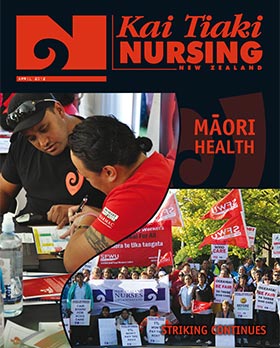
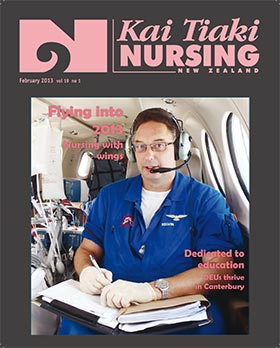

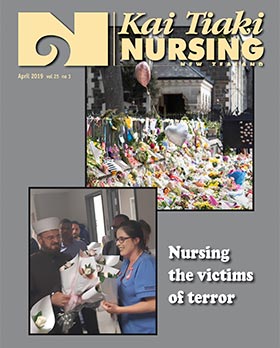
Over the years the journal has campaigned for equal pay for equal work, publishing a paper on the topic in 1957 – even though the NZRNA was then opposed to any political activism.
Beginning as a quarterly magazine, Kai Tiaki‘s frequency has varied over the years, but since 1988 it has been published 11 times a year. Its only gaps were in the 1940s, when two issues were cancelled in 1942 and 1947 because its sole editor, Agnes Donner, was on leave. In 1942, during World War II, regulations controlling the use of newsprint meant page numbers dropped to just 24 for the next five years.
Blending the professional and the industrial, like the organisation itself, Kai Tiaki includes news, opinion and features, as well as member interviews, and practice, clinical and professional development articles.
Unlike some of its sister union publications, Kai Tiaki has enjoyed a high degree of editorial autonomy which allowed the co-editors – generally trained journalists since the early 1970s – to make decisions over content.
It is a unique and challenging position for journalists, to be both part of and reporting on their employer. Co-editors over the years have written for members with integrity and honesty, even as NZNO passed through its own internal challenges, member unrest and strike action – a delicate task at times.
Kai Tiaki has enjoyed enviable readership rates among the 45,000 or so members who receive a copy in the post each month. 2019 research showed nearly 90 per cent of the 1128 members surveyed read Kai Tiaki either all or some of the time.1
Members asked for an online option in 2015, to allow more sharing of material and to save costs and trees. It has taken a few years but kaitiaki.org.nz was finally launched this year.
With NZNO facing a $1 million operating deficit, at September’s annual general meeting, a series of cost-cutting measures were announced, including ceasing of a printed Kai Tiaki.
But online, we plan to continue delivering the same trusted, and at times challenging, content, along with your views and news – including the debates and dissenting voices.
Reference
- Stodart, K. (2019). Kai Tiaki widely read, with a clear interest in an online version. Kai Tiaki Nursing New Zealand, 25(1), 12-13.
Keep reading Kai Tiaki and fight the good fight

It’s a bit of a jolt to write this (three decades – really?), but a little over 30 years ago I became co-editor of Kai Tiaki Nursing New Zealand, working (very happily) alongside Lyndon Keene, and later Glenda McCallum, then Kathy Stodart. We edited in interesting times – just before the New Zealand Nurses’ Association (NZNA) amalgamated with the NZ Nurses’ Union and not long after the “Nurses are worth more” strike. I’d been both a print and a radio journalist and editor, and returning to print was an especial pleasure; working for a union, a great privilege; and working with a female-dominated, hugely skilled profession, kind of fabulous.
My recollections of the journal are a little lost in the mists of time, but a few things stand out. The people at NZNA were amazing – passionate, hard-working, mightily able and frequently hilarious. Not only the professional-facing industrial, advocacy and education staff (Fiona, Raewyn, Donna, Philippa, Chris et al), but the support and back office teams running the organisation’s New Zealand-wide activities were brilliant, with chief executive Gay Williams’ PA Jan Solloway the star; president Helen MacKenzie and the union’s organisers, officers and delegates across the country – legendary and inspiring.
Our members were remarkable – as any group of workers organising themselves around professional principles of best practice, fairness, justice and a strong and stable health service generally are. Getting them in the magazine, hearing their stories, campaigning on issues, providing useful content and essential information were part and parcel of the Kai Tiaki mix. Finding something to put on the front cover was never quite so easy. For one summer issue, we raided my daughter’s toy box and bedding supplies, borrowed press manager Ann’s truck, nabbed a hospital bed and created an al fresco ward on a Te Whanganui a Tara/Wellington beach with a nursing friend reclining resplendent in her uniform, drinking cocktails from an IV drip.
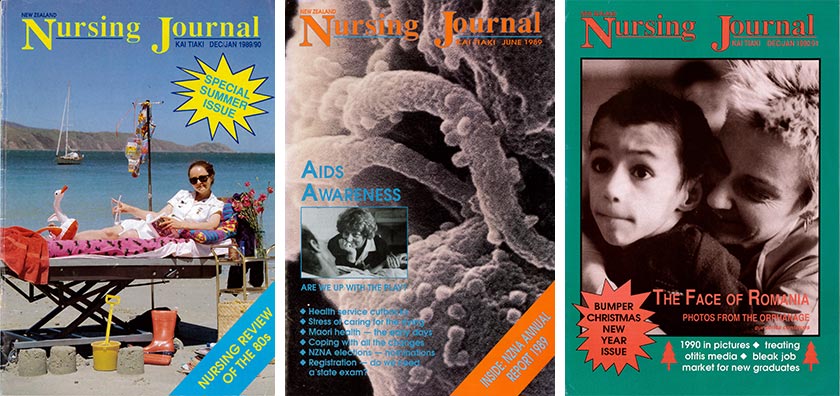
Two editions I clearly remember, and stood in awe of the contributors: an HIV/Aids issue leading with the resonant testimony of an HIV-positive nurse; and the letters home from a nurse working in Romania as the plight of children in the orphanages and institutions was exposed. They embodied the spirit of Kai Tiaki, its breadth of interests, its freedom to explore and investigate (occasionally hard argued for), as well as its essential practical function as purposeful organ of the rights of the worker!
The people at NZNA were amazing – passionate, hard-working, mightily able and frequently hilarious.
The mists of 30 years may be a little rose tinted, but NZNA, and Kai Tiaki in particular, were a great place to work. I used to argue that one of the most tangible benefits of belonging to a membership organisation was receiving a hard copy of their in-house magazine. Two professional magazines I’ve previously edited, both in the United Kingdom, where I returned to live some time ago, and in Aotearoa, are now fully digital. I read my newspaper online, along with most of my books. I have a single monthly subscription for a print magazine and those copies accumulate in stacks, accusing and unread. We are all different in how we want to read. I don’t know the full story leading to this being the final print copy of Kai Tiaki that you are holding in your hands right now. If you will miss it, and the process has been alienating, I am sorry for your loss. But please keep reading it, spreading the word, fighting the good fight.
Co-editor of Kai Tiaki from 1990-92, Claire O’Brien lived in Aotearoa/New Zealand for 19 years, before returning home to live in the UK in 2002. She is a communications manager for the British Film Institute. Although London-based, she retains a strong connection to this country, where her daughter still lives. Thanks to the ending of MIQ, she will be paying her a visit early in the new year.
‘My computer responded to instructions unpredictably’

I was an editorial assistant when, in 1985, Kai Tiaki took on a new look, coinciding with a switch to in-house computerised production. Up until then, the journal page designs were made up for the printer through a laborious process of cutting out columns of type-set script and taping them onto blank pages, leaving spaces for photos. Any editing or amendments at that stage involved calculating the number of lines of type you were going to end up with, so the columns fitted on the page properly.
The introduction of the new desk-top publishing system put an end to all that. All the typesetting, design, editing and alterations could be done instantly on screen. The computer sales people gushed about how everything would become much faster. Certainly, if speed is good, then computerisation had a very positive impact on my ageing process.
I soon learned that the computer brain is far from logical. My computer responded to instructions unpredictably. At times it would react differently to the exact-same instructions I’d given it the day before. Occasionally, most often as the deadline approached, it could get quite obtuse and even switch itself off in the middle of a conversation.
The computer customer support people (who got to know me well) put it down to software design hitches (this was the early days of desk-top publishing), but I never felt they were being completely up-front. That didn’t explain, for example, why my colleague, editor Ann Cherrington’s computer worked perfectly well, using the same programme (which my computer insisted I spelt incorrectly!) It was thanks to Ann the journal ever got printed in those days.
Some of my key memories are of the year when nurses finally said: ‘Enough!’ It was 1985.
Computer challenges aside, some of my key memories from my time with the NZNA (NZ Nurses Association, which merged with the Nurses’ Union in 1993 to become NZNO) are of the year when nurses finally said: “Enough!” It was 1985. Nurses across the country were gearing up for unprecedented industrial action. Health Minister Michael Bassett was not happy; he was not budging. Nor were nurses, and nurses had strong support from the public.
Prime Minister David Lange made an unannounced visit to NZNA’s national office. As it happened, most of the staff were out. Chief executive Pat Carroll’s PA, Jan Solloway, was holding the fort. Jan was a polite, savvy, no-nonsense person. She would have offered the PM a cup of tea, and probably a bit of advice, which I’m sure would have been far more sensible than that being offered by his Health Minister at the time. In the end, of course, the Government did see sense. If only the political memory lasted more than three years, maybe nurses would have been spared having to go through it all again later.
Nurses had a just cause, but that’s not the only reason they won through – there are plenty of just causes that haven’t. Another important factor has been nurses’ unity, their organisation and strength of voice. Kai Tiaki has been a key part of that. And I’m really proud to have been a small part of it. Here’s to you, Kai Tiaki, and all you nurses and members who make it what it is!
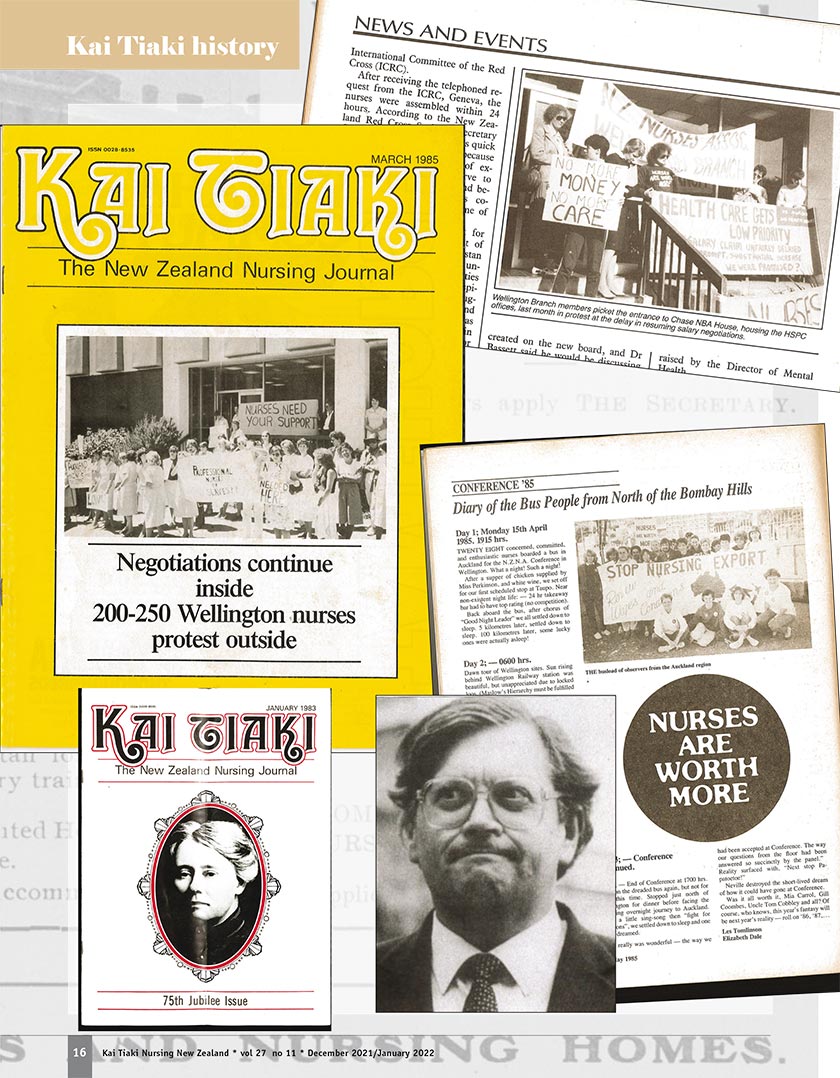
Lyndon Keene was a Kai Tiaki subeditor, acting editor and finally co-editor, from 1985 to the early ’90s. He also worked in public relations for NZNA and NZNO. He now lives in New South Wales, where he paints and works part-time as a policy and research adviser for the Association of Salaried Medical Specialists.



